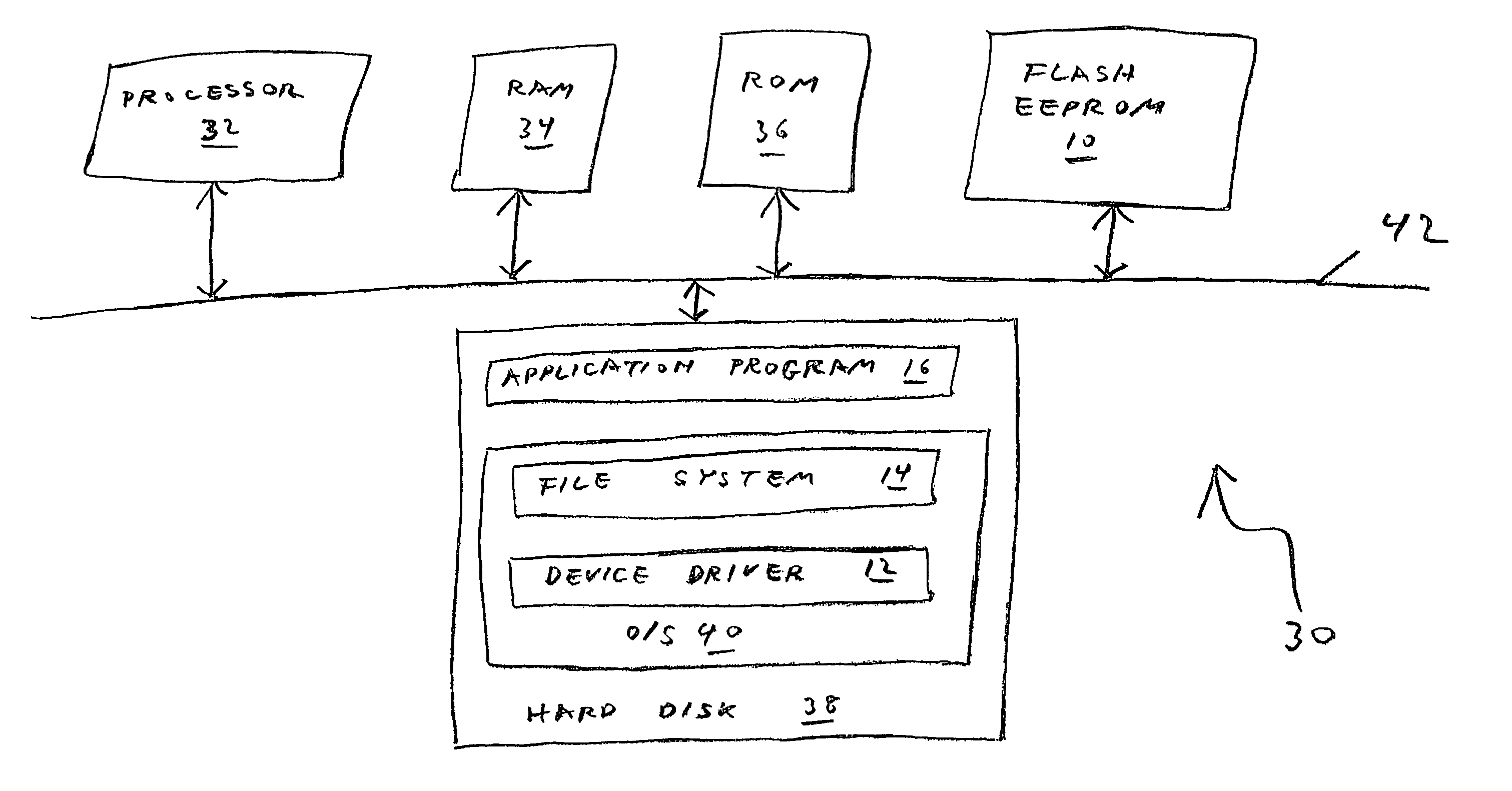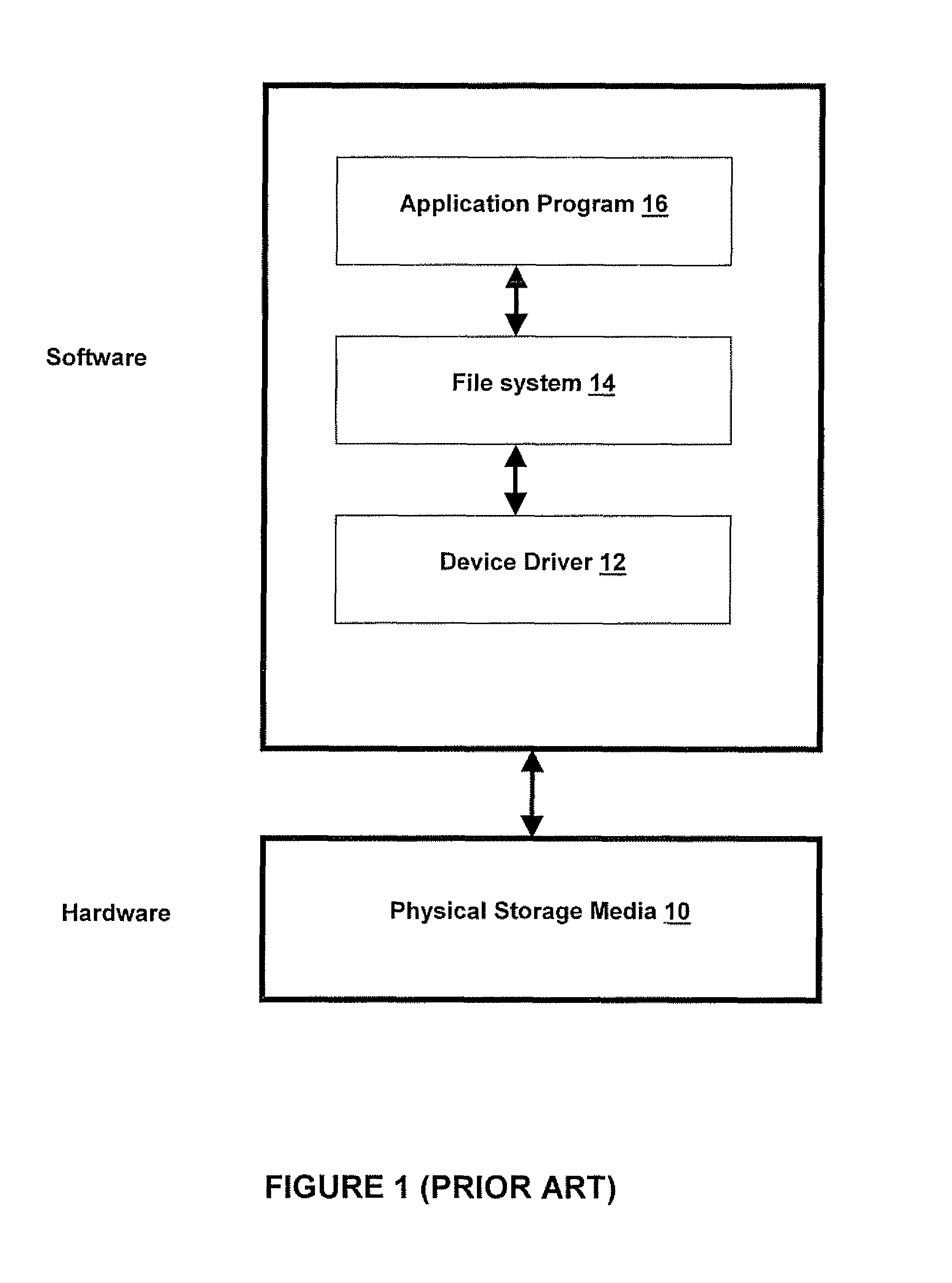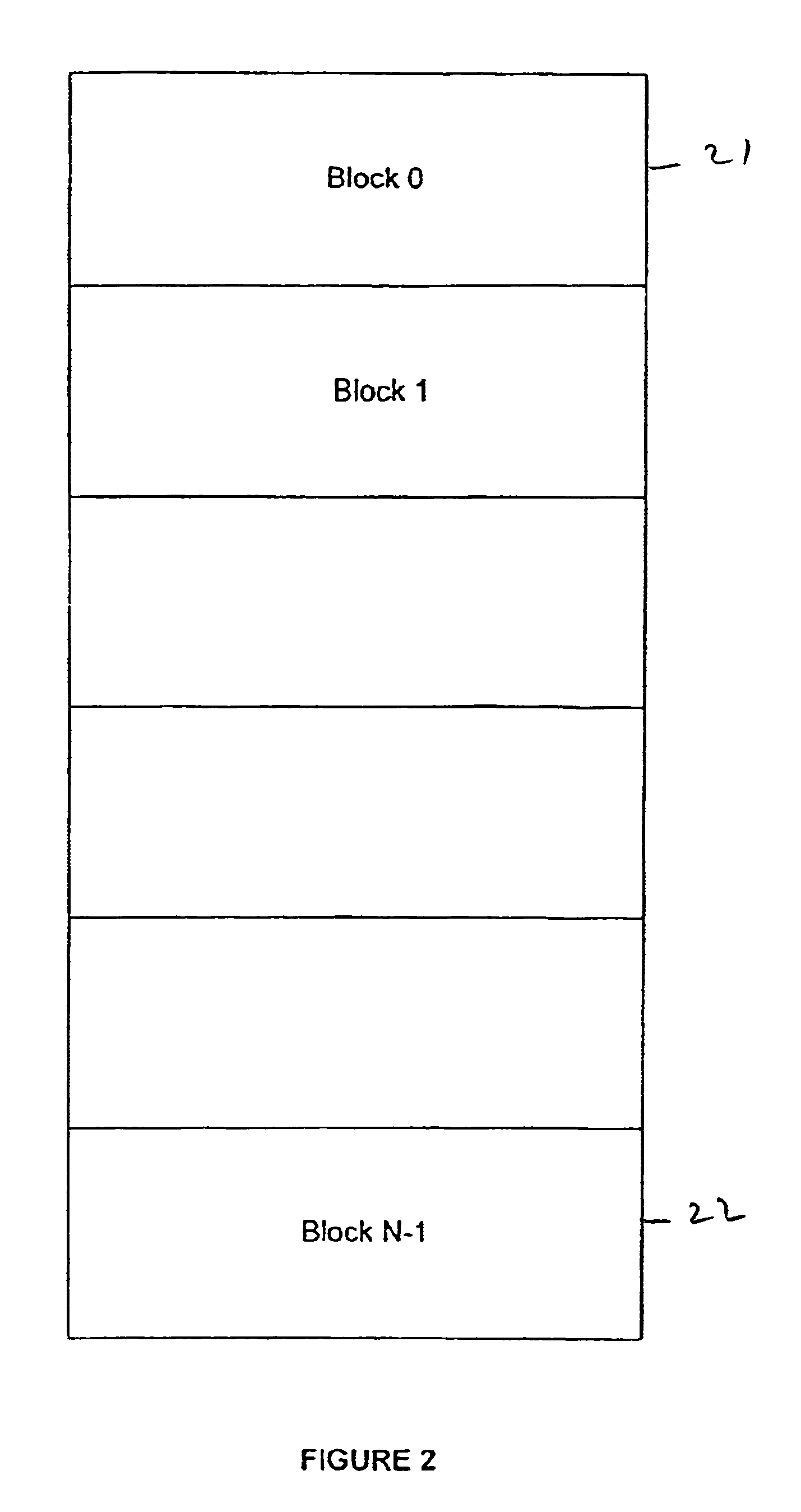Method of managing files for optimal performance
a file management and optimal performance technology, applied in the field of file systems, can solve the problems of only possible time saving using the “continuous reading” feature, affecting the performance the user will see, and consuming time for defragmenting utilities, so as to enhance read performance, enhance latency performance, and enhance write performance
- Summary
- Abstract
- Description
- Claims
- Application Information
AI Technical Summary
Benefits of technology
Problems solved by technology
Method used
Image
Examples
first example
High Write Performance
[0047]A video streaming application 16 in a cellular phone initiates a session in which application 16 downloads a video file over the air and stores the video file in the phone's local storage 10 for later replay. The download protocol requires application 16 to accept any packet of data when sent by the source, with no mechanism for asking the source to pause or re-transmit. The phone's RAM memory is limited in capacity, and cannot be used for buffering incoming data until it can be permanently stored in medium 10. Therefore high write performance (and also low latency time) is vital for successful operation under these conditions.
[0048]The phone employs a storage system implemented according to the methods of the present invention. Immediately after establishing the connection with the source (and before starting the data download) application 16 creates a new file for storing the incoming data. This is done by issuing to a file system 14 of the present inve...
second example
High Read Performance
[0061]A game console includes a storage system for storing game applications that are loaded into RAM and executed at the user's will. While write performance is unimportant (the game applications are stored just once), read performance is extremely important as it affects the time from when the user selects a game to run until the game actually runs. There is no memory paging support in the device's operating system, so the full application must be loaded before it can start execution.
[0062]The console employs a storage system implemented according to the methods of the present invention. When storing the game application into the device (e.g. at the manufacturing site or upon downloading a new game application from the Internet), a storing application 16 creates a new file for storing the game code. This is done by issuing the file system call:[0063]filehandle=CreateFile(“PacMan”)
or a similar file system call, where “PacMan” is the name of the new file and “fi...
PUM
 Login to View More
Login to View More Abstract
Description
Claims
Application Information
 Login to View More
Login to View More - R&D
- Intellectual Property
- Life Sciences
- Materials
- Tech Scout
- Unparalleled Data Quality
- Higher Quality Content
- 60% Fewer Hallucinations
Browse by: Latest US Patents, China's latest patents, Technical Efficacy Thesaurus, Application Domain, Technology Topic, Popular Technical Reports.
© 2025 PatSnap. All rights reserved.Legal|Privacy policy|Modern Slavery Act Transparency Statement|Sitemap|About US| Contact US: help@patsnap.com



